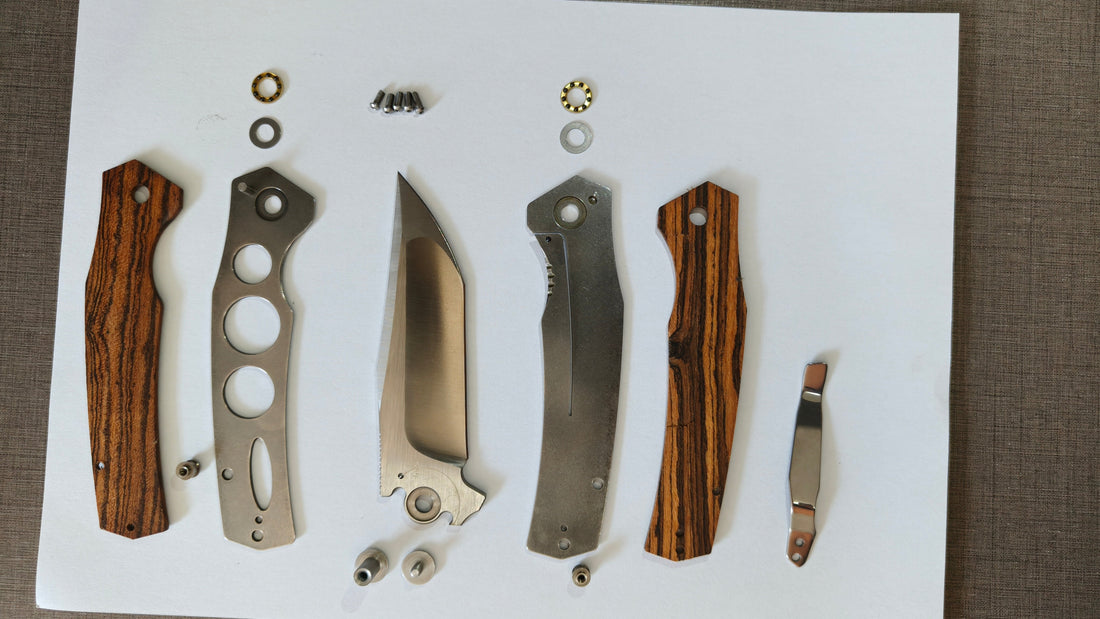
The Complete Guide to Folding Knife Maintenance: 5 Steps to Keep Your Blade Sharp and Reliable
Your folding knife might be a practical Everyday Carry (EDC) tool, a reliable companion for outdoor adventures, or a finely collected piece. Regardless of its role, regular maintenance is crucial for ensuring its performance, safety, and longevity. With a few simple steps and basic tools, you can keep your blade in top condition.
Tools You'll Need:
-
Soft cloth, Cotton swabs
-
Warm water & mild dish soap
-
Professional knife lubricant (e.g., Nano-Oil, Hoppe's No. 9)
-
Compressed air (optional)
-
Screwdriver set (matching the pivot screws)
-
Sharpening system (choose based on skill: sharpening stone, guided system, etc.)
The 5-Step Maintenance Routine:
1. Cleaning: Removing Grime & Residue
-
Routine Cleaning: After use, wipe the blade and handle thoroughly with a soft, slightly damp cloth to remove fingerprints, moisture, and dust. For grime on textured handles, use an old toothbrush for gentle scrubbing.
-
Deep Cleaning:
-
Use warm water with a small amount of dish soap and a soft cloth or cotton swabs to scrub the blade, lock bar, and all crevices.
-
For stubborn stains or sticky residue, use a cotton swab dipped in a small amount of rubbing alcohol or acetone (use with caution, as it can damage some handle materials).
-
Finally, dry thoroughly using compressed air to blow out moisture from crevices, or use a dry cloth and swabs. Ensure the knife is completely dry.
-
2. Lubrication: Ensuring Smooth Action
-
Key Areas: Apply 1-2 drops of professional knife lubricant to the pivot bearing or washer area. Avoid over-oiling, as it can attract more dust and debris.
-
Operation: After applying the oil, open and close the blade a dozen times to work the lubricant evenly into the pivot mechanism.
3. Adjustment: Maintaining Structural Integrity
-
Check the pivot screw, handle screws, and pocket clip screws for any looseness.
-
If you find loose screws, use a precisely fitting screwdriver to tighten them gently. Avoid over-tightening to prevent stripping the screws or damaging the threads.
-
The goal is a blade that opens smoothly without any blade play.
4. Sharpening: Restoring the Perfect Edge
-
When to Sharpen: Sharpen when cutting feels sluggish or the blade slides off your fingernail without biting.
-
Methods:
-
For Beginners: A guided sharpening system is recommended for its simplicity and consistency.
-
For Advanced Users: Use a whetstone for freehand sharpening, offering more control over the edge angle.
-
Technique: Maintain a consistent angle and alternate sides until a sharp edge is formed.
-
5. Storage: Protecting from the Elements
-
Store your folding knife in a dry, well-ventilated place.
-
Avoid prolonged exposure to humidity, high heat, or direct sunlight, as these can accelerate steel rust and handle material degradation.
-
For long-term storage, apply a light coat of oil on the blade for extra protection.
Recommended Maintenance Frequency:
-
Frequent Use: A quick clean and lubricate monthly.
-
Occasional Use: Clean after use, and perform a full maintenance every quarter.
-
After Heavy Use or Exposure to Moisture: Clean and oil immediately.
Regular maintenance is not just an investment in your tool; it's a ritual that connects you with your gear. Spend a few minutes caring for it, and it will reward you with years of reliable service.